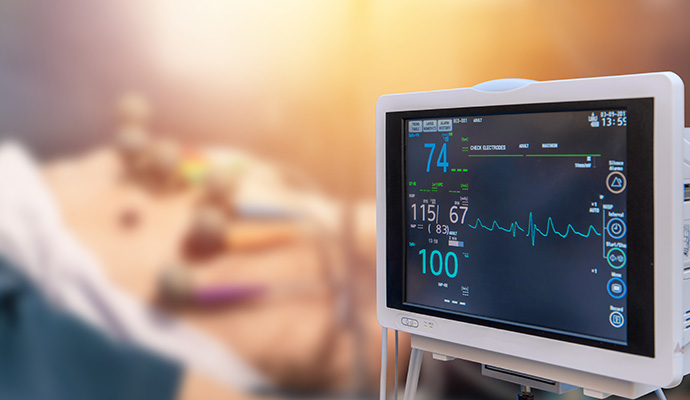Preventing Medical Necessity Denials With Clinical Documentation
In emergency medicine, physicians must provide care, and insurance payers are obligated to provide fair payment. But there's a growing trend of payment denials that physicians can only overcome with better documentation.

Source: Getty Images
- Healthcare coverage has never been more important, one of the many lessons we’ve learned during the COVID-19 pandemic. And private insurance companies have reaped the benefit of this growing need — United Health Group exceeded $4 billion in profits in the 2021 fourth quarter alone, compared to $2.35 billion in the previous year’s final quarter.
Private insurance plans are the primary source of healthcare coverage for most Americans. These insurance companies provide coverage for two-thirds of the population. They also serve as third-party administrators for Medicare and Medicaid health plans, which lets them expand their membership to those covered by public health insurance. In addition, these insurance companies operate on a massive scale, which allows them to unilaterally create policies that can impact patient costs and healthcare provider reimbursement.
Over the past several years, emergency medicine has seen an exponential rise in down-codes and payment denials resulting from proprietary formulas and algorithms used by insurance companies to determine medical necessity.
“Emergency physicians should be mindful of this trend,” explains Dr. Jason Adler, VP of Client Services at Brault Practice Solutions. “Commercial insurers are systematically placing emphasis on the clinician to prove the patient needed to be in the emergency department. It’s disappointing because, as emergency physicians, we must treat every patient who comes in for help 24/7/365 — without considering insurance status or ability to pay. According to The Centers for Medicare & Medicaid Services, 55% of an emergency physician’s time is spent providing uncompensated care.”
Dr. Adler explains a few strategies that clinicians should keep in mind when documenting a patient visit to support the medical necessity of their work.
Clearly state when another clinician referred a patient
Many patients are sent to the emergency department from outpatient clinics/offices, urgent care, or directly by their physician. Capturing this in the documentation notes reinforces the need for a patient to be treated at a higher level of care.
Patients arriving by EMS
The process of EMS activation suggests there is a concern about a severe or life-threatening condition that requires emergency care. Documenting that the patient arrived by EMS can be used to support the medical necessity of the visit. Additionally, documenting the care rendered by EMS is helpful when that treatment results in patient improvement.
For example, EMS is activated by a bystander because a patient was not breathing due to an overdose, begin resuscitation, and gave an antidote leading to the improvement of symptoms. Upon arrival to the emergency department, the patient is now breathing with the only symptom of nausea. A payer may say that nausea does not meet the medical necessity to be in the emergency department but offering the context of pre-hospital care would refute that.
Why did the patient come to the emergency department today?
This is a common question asked at the bedside that doesn’t always make it to the medical record. It’s important to document if symptoms have progressed, changed, or if a new symptom developed before seeking emergency care. For example, a patient with abdominal pain for five days who develops persistent vomiting offers a different perspective than the abdominal pain alone. Other considerations include the inability to control pain with over-the-counter medications, the inability to tolerate fluids, and how the patients’ symptoms affect the ability to perform activities of daily living.
Comorbid conditions and risk stratification
Documenting comorbid conditions and linking them to the presenting illness supports the medical necessity of the visit by demonstrating the severity of the illness and risk stratification. For example, the statement “50-year-old male with a history of diabetes, hypertension, active nicotine use presents with 1 hour of chest pain” offers more clarity than leaving the comorbid conditions elsewhere or not documenting them at all.
Describing your thought process in the medical decision-making section
Documenting a differential diagnosis, a rationale of why labs or images were or were not ordered, and your cognitive thought process that led to the final disposition is a critical component of demonstrating the medical necessity of the visit. Contemporaneously documenting responses to treatments, interventions, and reassessments can also be valuable.
Final diagnosis
A final diagnosis should consider the nature of the presenting problem and what you’ve identified. If there is no clear definitive diagnosis, a presenting complaint, sign/symptom, abnormal vital sign, lab, or imaging finding may be used. Pertinent comorbidities and mechanism of injury are also options to include. For example, instead of listing syncope as a single diagnosis, a physician could add hyponatremia and long-term use of anticoagulants to the diagnosis list to provide a clearer description of the physician findings.
“Documentation is our primary defense against payment denials,” explains Dr. Adler. “But, a better chart doesn’t always have to be longer. The key is for medical providers to be focused and deliberate in how they approach their documentation.”
________________________________
Article Contributor:
Dr. Jason Adler, MD, VP of Practice Improvement at Brault Practice Solutions
ABOUT BRAULT PRACTICE SOLUTIONS
Brault is a revenue cycle and practice management organization that partners with hospitals and independent physician groups. Their intelligent practice solutions include coding and billing, MIPS optimization, provider documentation training, and practice management. Learn more at www.Brault.us
